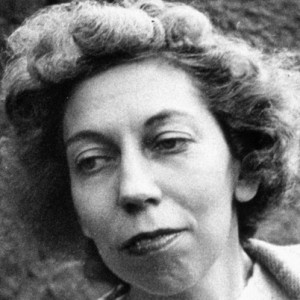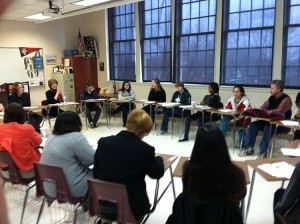I want to pass along an exercise I led earlier this month at a high school Writers Fest. I asked students to explore setting in order to glean new insights into character. Like so many writing exercises, if you’re not in a place to sit down and do this now, bookmark this page and come back later. Thinking about the exercise and doing it will yield different results.

About setting, Eudora Welty said, “Every story would be another story, and unrecognizable if it took up its characters and plot and happened somewhere else… Fiction depends for its life on place. Place is the crossroads of circumstance, the proving ground of, What happened? Who’s here? Who’s coming?” [Bailey, pg. 165]
In this exercise, we’ll take Welty’s wisdom and observe the effect that setting has on character. Before we start, pick a character, any character… perhaps one in your current work in progress. If a particular one doesn’t come to mind, imagine a setting that has always captivated you—one you’d like to write about. Now put a character there.
Next, put the words BAD WRITING at the top of your paper or computer screen. You now have permission to write whatever comes to mind. Loosen up. Relax. Let go of expectations.
But before we write, I’m going to ask you to engage your imagination with a series of prompts; these assume that your character is human, but if it’s alien or animal or whatever, make your own modifications. There’s no right or wrong here. My hope is that you’ll come away from this exercise with some insights. If a friend is available to read these questions to you while your eyes are closed, great. If not, close your eyes after you read each prompt and take yourself into the moment.
Now take a deep breath, and we’ll begin, but don’t write yet. First, engage your imagination. Go into the setting. Become the character. The prompts will encourage you to experience your setting for a few moments before writing.
- First, notice the angle of the light. What is the source of the light? From what direction does it come?
- What color is the light?
- What other colors do you notice?
- What time is it right now in your character’s world?
- What year is it?
- What month?
- What is the weather right now in this place?
- What is the quality of the air? Is it clean or dusty, thick or thin (as in high altitude), smoky or foggy or salty like it’s coming off the ocean?
- What is your character wearing? How well is he/she protected from the weather?
- What is underneath your character? If standing, what’s under his/her feet. If lying down, what is the character lying on? What is the character touching?
- Let your character reach for the thing that is underneath him or her. What does it feel like? What’s the texture? The temperature?
- Now your character brings a fingertip to the nose. What is the smell of whatever your character just touched?
- Now a breeze come up in this place, and on the breeze there is an odor. Identify that odor. Imagine what the source of the smell might be.
- Now your character puts a finger into his/her mouth. What does it taste like?
- Imagine that your character is really hungry and reaches for food. What food does he/she find here, and what does that food taste like?
- What sounds does your character hear in the distance?
- What sounds does s/he hear near by?
- Ask your character: If you could change one thing in the world in which you find yourself, what would it be?
- If you could have one thing right now, what would that thing be? What do you hope for, or long for?
- What weighs heavy on your character’s heart right now?
- Imagine that a particular sound comes up. Your character moves toward the sound and once there, he or she encounters another character. What is the sound, and whom does your character encounter when he/she moves toward it?

Now write, letting your character spill out onto the page. Write in first person from your character’s point of view. Let your character engage with the place and with the new character who’s shown up. Include dialogue.
After at least five minutes (ten or fifteen is okay), stop writing about that particular place and character. Get a new sheet of paper or open a new word file, and again put BAD WRITING at the top. Take a deep breath. Relax.
Now go back into your imagination with this same character, but this time, there is a door or a portal or an archway or something that your character goes through. When s/he crosses the threshold, the character is in a setting that is the opposite of the place where he/she was before…
- If the angle of light in the first setting had been high or bright, here it is low or dim, and vice-versa. Visualize the light in this new place.
- Whatever colors your character saw in the first setting are not visible here. Instead, there is a different color palette. Imagine the palette…
- Whatever year your character was in before, make it now a few years earlier or later.
- The month is now six months different from whatever it was before – so if you were in summer, now it’s winter, and if it had been spring, now it’s fall.
- What time of day or night is it? Make it the opposite of the first setting.
- Whatever the weather was before, now it is the opposite, so sunny becomes rainy and cold becomes hot, etc.
- What is the quality of the air that your character is breathing?
- What is your character wearing? If he or she was well protected from the weather in the first setting, now take away that protection, and vice versa.
- Continue through the same set of questions posed earlier, imagining each prompt differently from the first time around, and ending in a moment when your character encounters another in this new setting.
Now, again, write from your character’s point of view, letting him/her react to the experience in this new place. Add dialogue. Write for at least 5 minutes, preferably ten or fifteen. Then sit back and reflect on the way the setting altered the characters’ mindsets, the tone of their interaction, the tension and conflict in the scene. What did you learn about your characters or your story?
Thank you to Patty Smith for inviting me to participate in Writers Fest, to Appomattox Regional Governor’s School for hosting the event, and to Bill Blume for snapping this picture of me leading the workshop!
